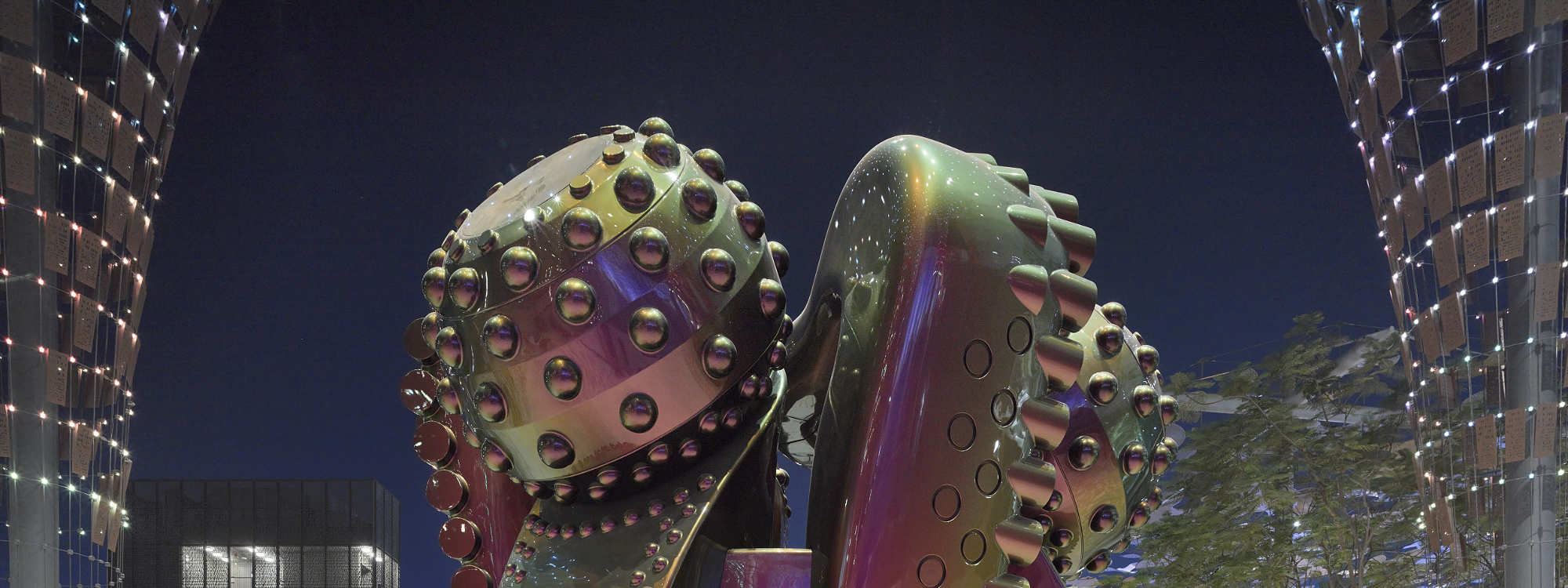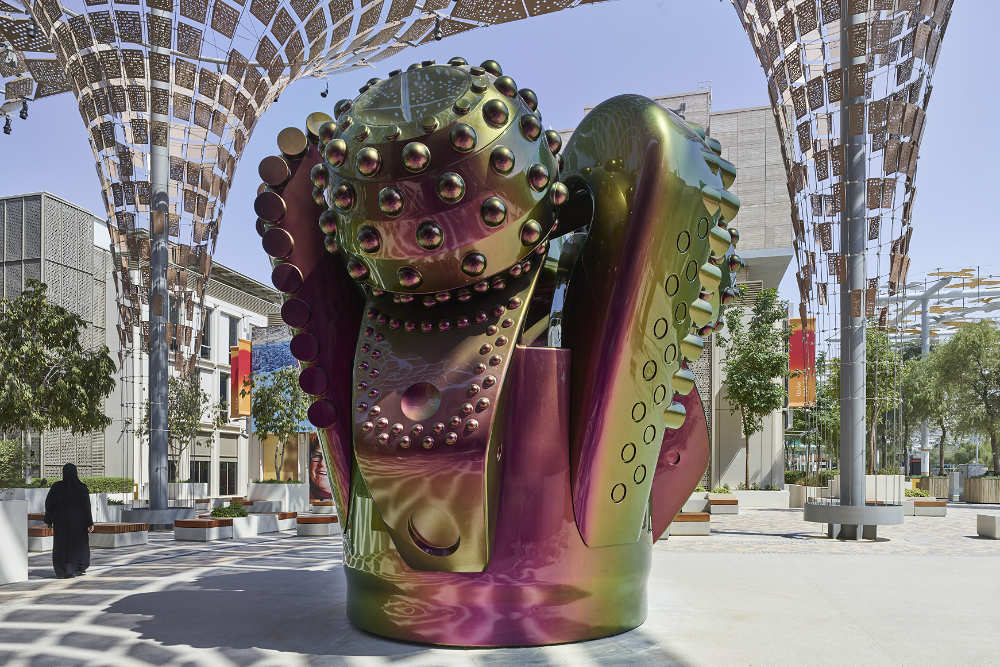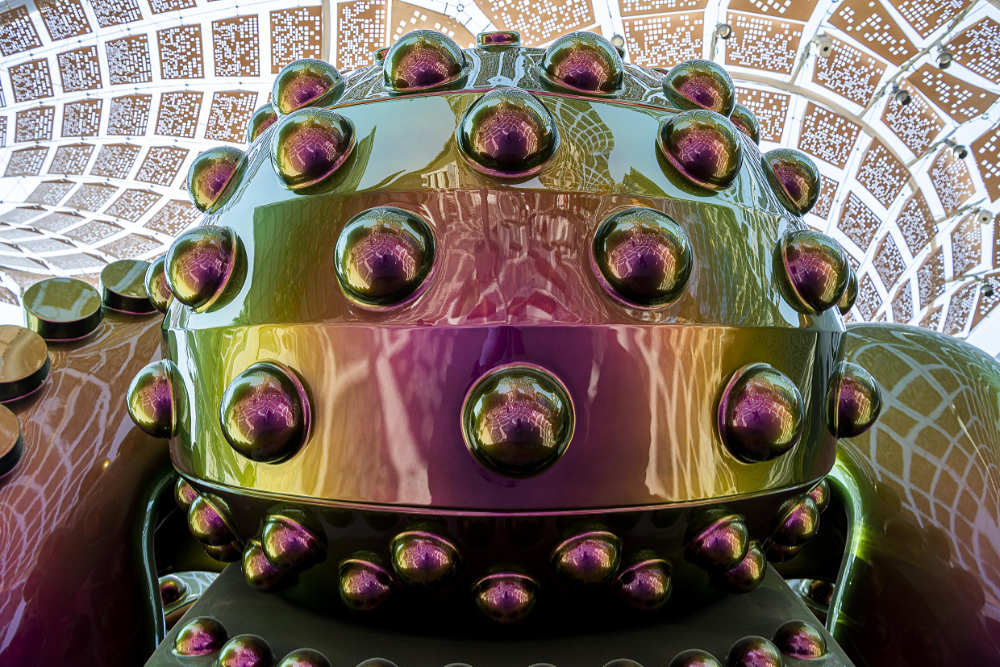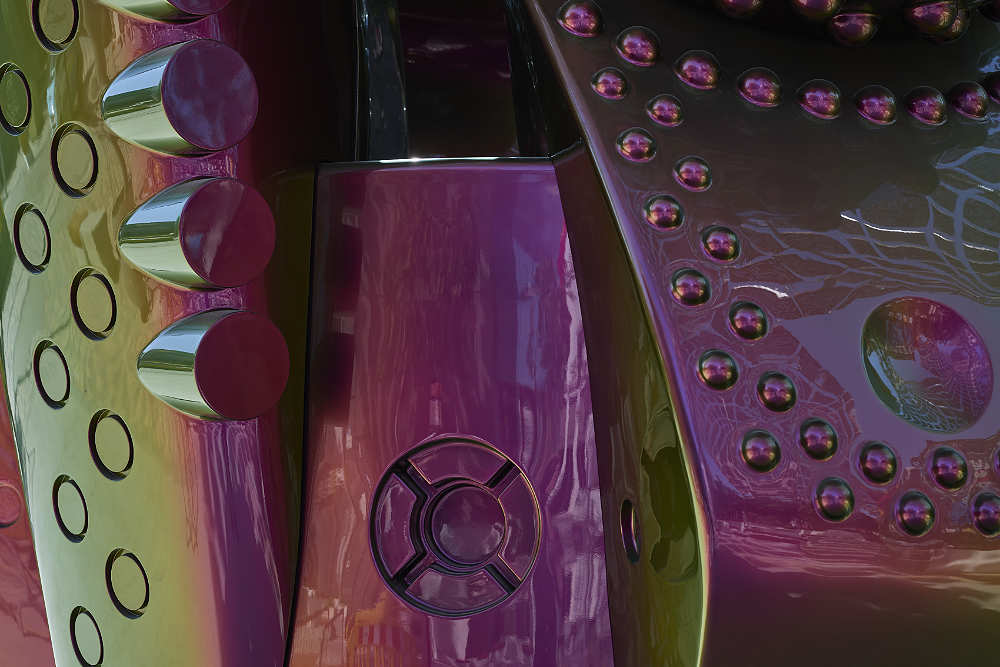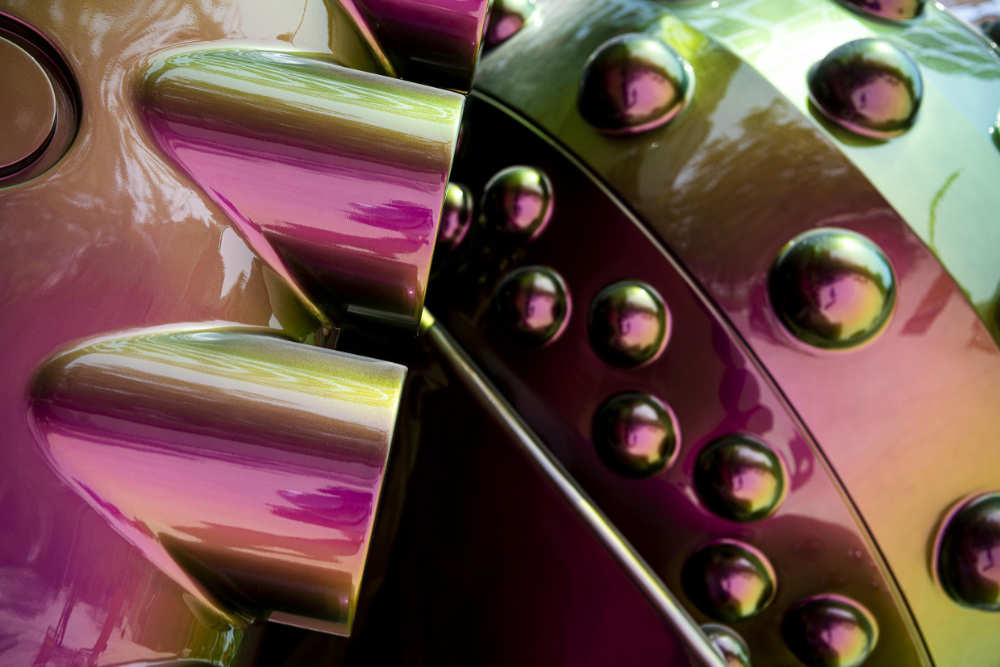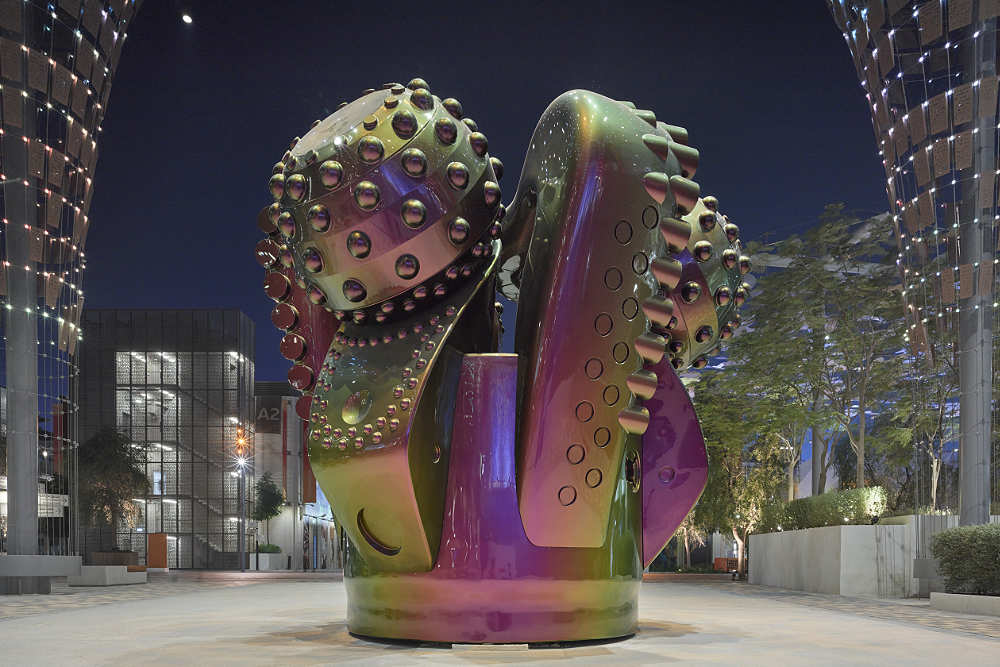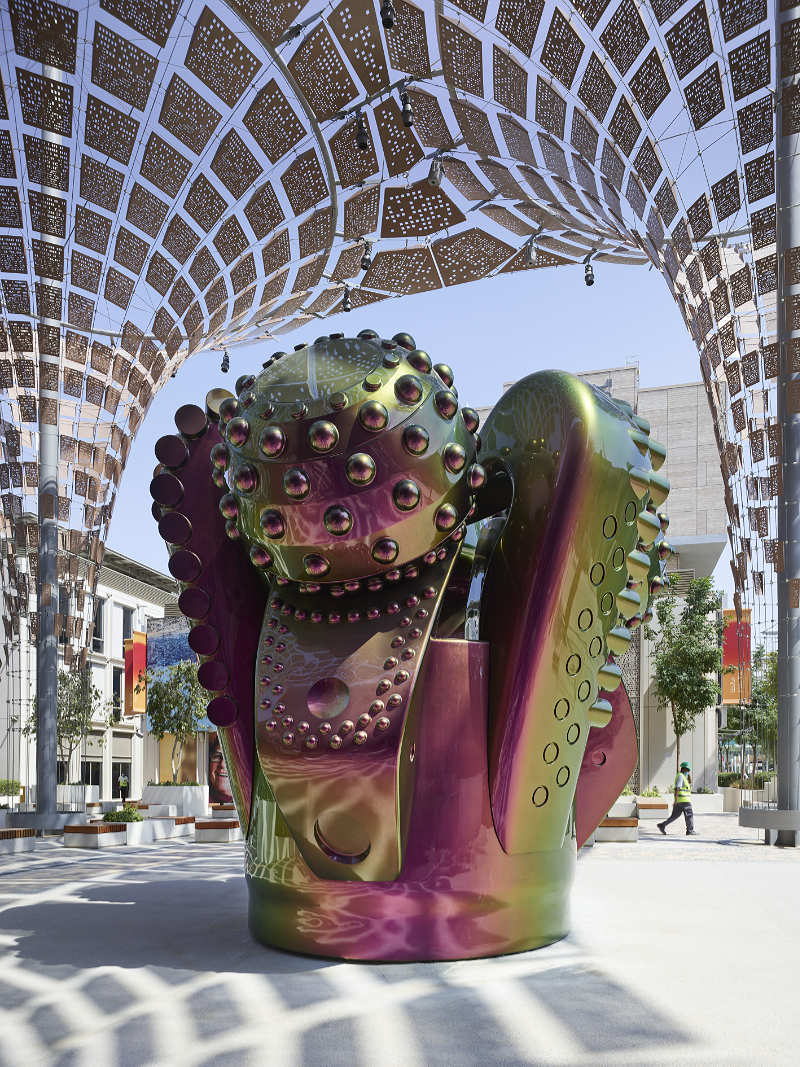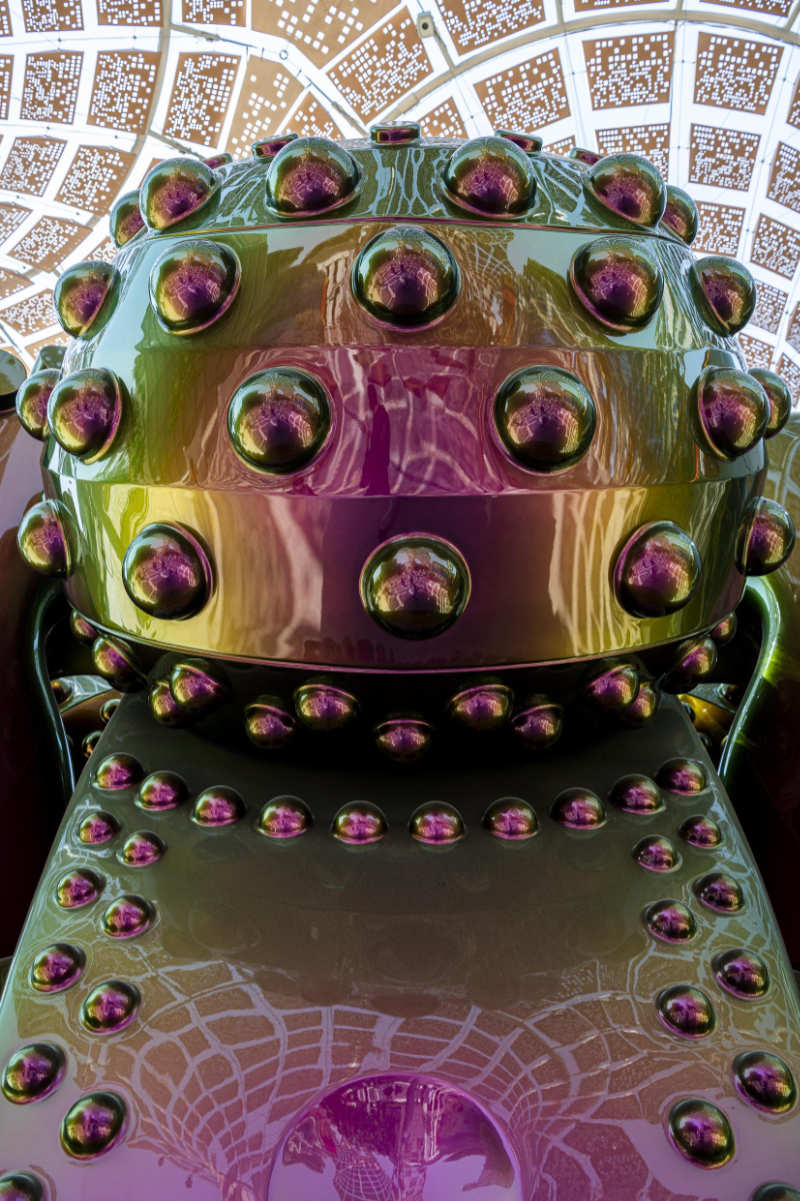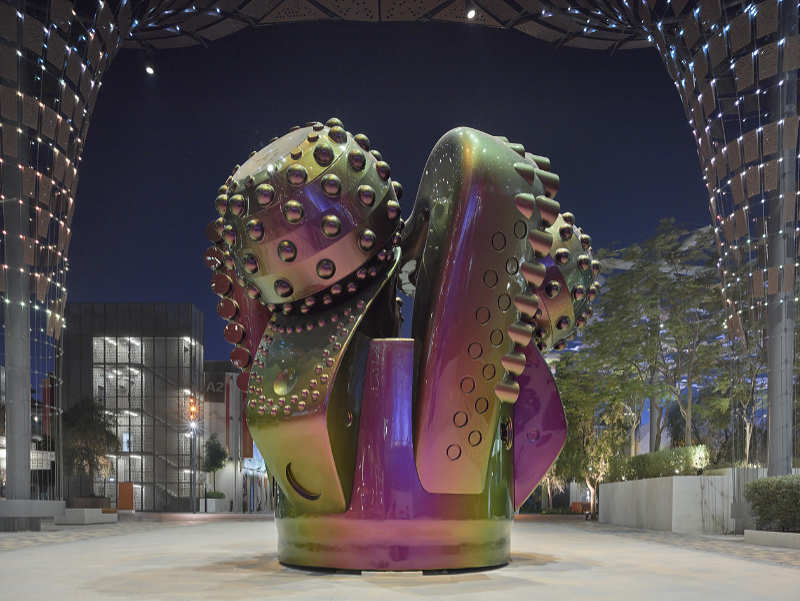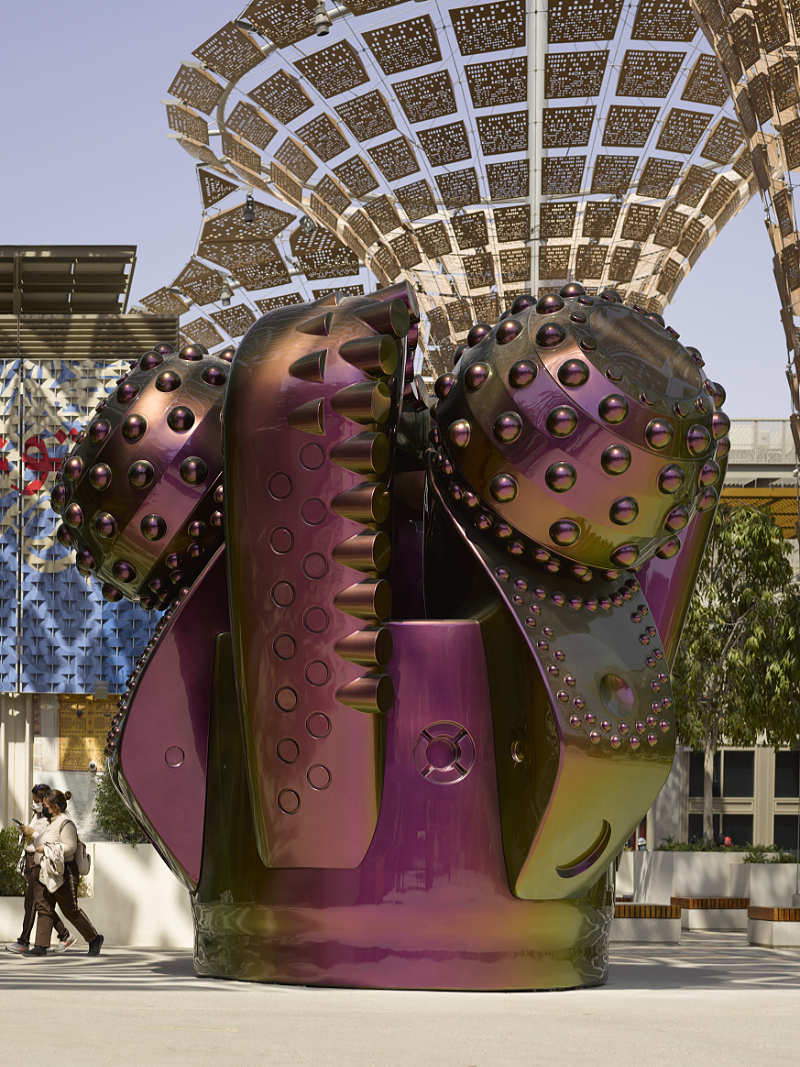Binder & Haupt: Although today the term "chimera" designates a fictional creature composed of parts from different animals, it has a negative connotation for many people, since a chimera was a fire-breathing hybrid monster in Greek mythology, or if one thinks of the human-animal chimeras that can be created in genetic laboratories nowadays. In the case of your artwork, have you conceived it as a fantastic combination, or is it somehow meant as a warning monument of some sort?
Monira Al Qadiri: The work comprises two meanings at once: it celebrates oil as a miracle substance that transformed whole societies and our entire modern way of life all across the world, but also warns that it's a curse - a destructive force for the environment that we have to move away from in order to achieve a more sustainable future. Both of these ideas are embedded in the title “Chimera,” since the work has many different facets conceptually. Also, the work refers to the pre- and post-oil cultures in the Gulf region, which are both alluded to in its shape and its color.
B. & H.: Could you tell us a bit about the working process or sculptural technique? Its iridescence resembles the luster of pearl nacre or the colors of an oil film on water. How does this iridescence phenomenon occur?
M. AQ.: The sculpture is made of aluminum and is built almost like a car. It has a an interior “chassis” that supports the weight and all the different parts of the sculpture, and a painted “body” on the exterior that is attractive to the eye while being durable against the elements. Building this permanent sculpture was an extremely complex process that took almost two years with many experts and engineers involved in its making.
As for the phenomenon of iridescence, it's an illusion created by our human eye. Basically the paint contains very tiny crystals that have a different color on each side, and as you move around the sculpture you see different shades morphing into one another. The pearl also is attractive to us as an ornament because of this phenomenon, and oil itself as well, even though people don’t usually perceive its beauty.
B. & H.: How do you imagine will the visitors of the Dubai 2020 Expo engage with your sculpture? And do you think that the way it is perceived or reflected upon may change with time and with the Expo ground becoming a "normal" neighborhood?
M. AQ.: Like all art in public space, I feel it's very difficult to usher people towards seeing your specific concept for the work. I think it's inevitable because it's an open space for the public to access and not a controlled environment like the one in a museum. So the work takes on a life of its own as people interact with it, and actually as an artist I accept this inevitability. I would like for people to have their own impression of the sculpture while looking at it, also at different times of the day since its color changes quite dramatically.
I am excited for the visitors of the Expo of course, as I could never have dreamt of such a large public seeing my work at once. But I’m also excited for the phase afterwards when the work stays there for many years and neighborhood residents start to live with it and create memories around it. That's really when I feel the work will come alive. Public art is so important for nurturing the social fabric of a place, and I hope my work will become a small part of that unique chapter in the future.
Berlin, November 2021
